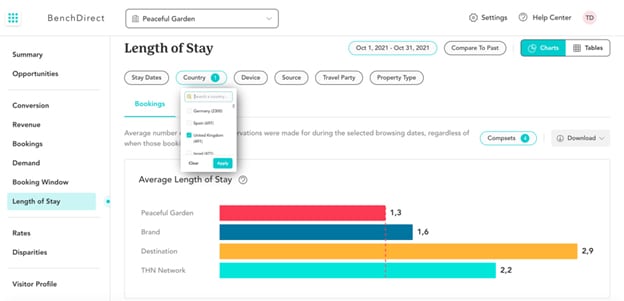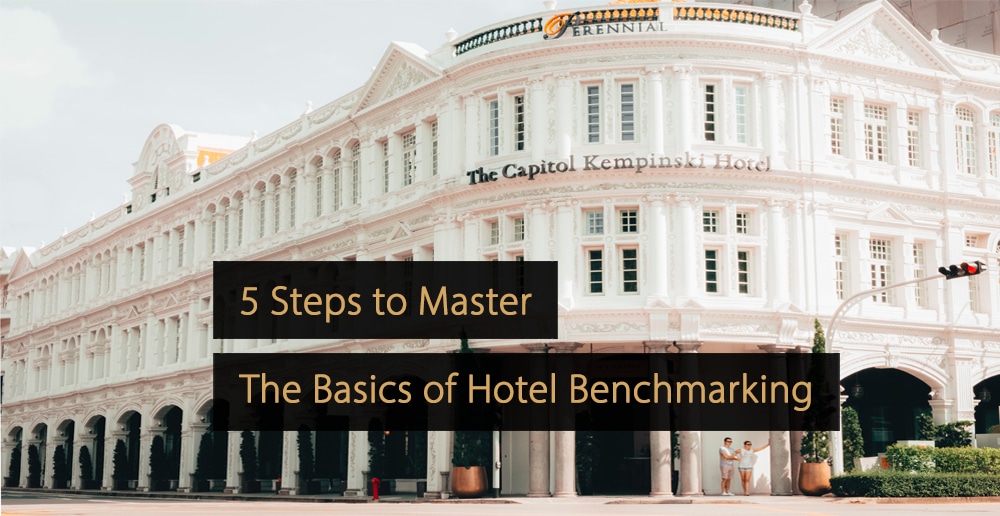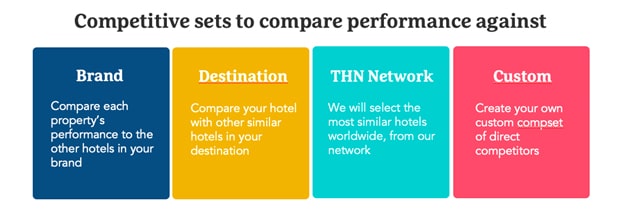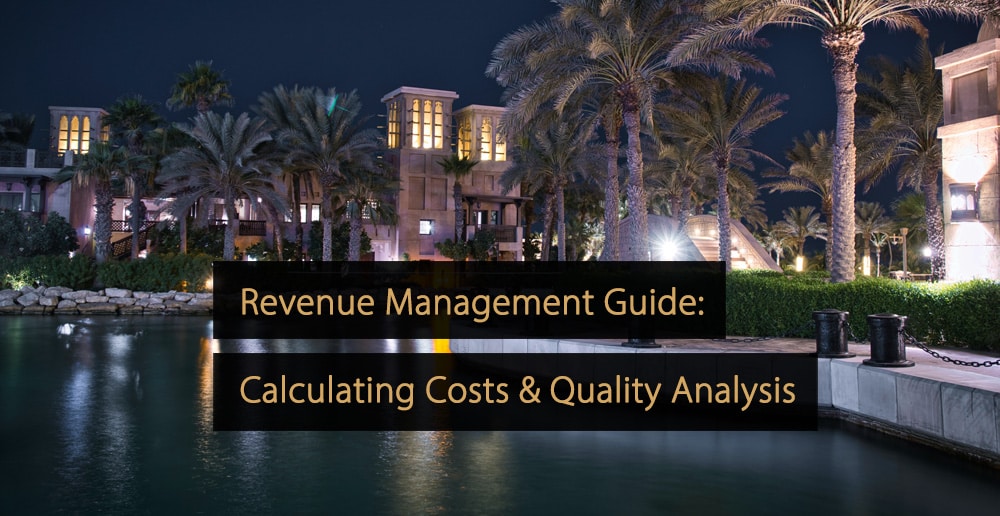Whether your hotel brand contains five-star luxury hotels or serviced apartments, having precise data and knowing how to leverage it, is critical to building a successful hotel revenue plan.
When it comes to implementing a hotel benchmarking strategy, there are multiple questions to consider. How do I define my compsets? What metrics should I analyze? How do I go about interpreting the results? In this article, you can read 5 steps to take to be ready for implementing a hotel benchmarking strategy.
Benchmarking Tools
To help you navigate through available data, you can use a benchmarking tool, such as the tool from The Hotels Network. Benchmarking tools can provide some of the most useful information, as they allow you to understand your hotel’s performance and how it compares to the market and competition.
Using the learnings from benchmarking, you can define your brand’s strengths and identify areas for improvement, giving you a clear picture of your positioning and how you can differentiate yourself from the competition.
5 Steps to Master The Basics of Hotel Benchmarking
Below you can learn how to master hotel benchmarking in 5 steps.
1. Understand Who Your Competitors Are
The first step in benchmarking is identifying who your competition really is. Hoteliers tend to compare their performance to who they consider their direct competitors to be: similar hotels in the same destination. But there are other scenarios to consider.
In today’s complex world of hospitality, it’s important to think beyond the traditional idea of a compset and incorporate a more dynamic vision. You can learn from other similar hotels located all around the world, leading to a better understanding of your own property’s performance. With this approach, you can shift from a merely competitive mindset to a learning mindset, resulting in considerably richer observations and conclusions.
But, how? For example, you can benchmark your results to properties that are located in completely different parts of the world but who welcome similar types of travelers and receive a similar volume of direct reservations. This comparison can provide you with additional learnings and enable you to spot opportunities that you would have missed otherwise.
2. Know Which Metrics to Compare
It’s great to have access to many hotel data, but you should keep in mind that not all of it is relevant to your hotel’s strategy. You should focus on those metrics that can significantly impact your results and track how these change over time.
In terms of benchmarking, hoteliers typically focus on occupancy and ADR, but many others can be considered. An interesting area to dive into which is not always taken into consideration is your direct channel performance. Comparing relevant metrics at each stage of the online booking process, such as total website conversion or booking engine conversion, can clearly understand where you are doing well and where you are not doing so well.
Furthermore, analyzing these direct booking metrics provides you with a much more complete picture because the results are based on 100% of your website traffic, rather than just the 2-3% that ends up booking.

Length of Stay filtered by UK traffic
3. Drill down into your competitive data
The sky is the limit when analyzing data. By breaking down your hotel’s benchmarking data by user location, search date or even travel party, you can gain a deeper understanding of your hotel’s strengths and weaknesses.
Need an example of where to start? Using your benchmarking tool, consider filtering the average length of stay for direct bookings at your hotel for a specific visitor location: UK. This filter is helpful for checking how long your UK guests are staying at your hotel and comparing it to your compsets. These types of granular insights provide a more realistic view of your property’s situation, allowing you to pinpoint exactly where your marketing efforts and approach need to be adjusted to boost revenue.
4. Compare Results to Previous Periods
Benchmarking is built on the principle of comparing performance. Results can be compared to previous time periods so you can evaluate what worked and what didn’t work, and understand how this came to be.
However, it’s not always optimal to focus exclusively on historical data, particularly in today’s uncertain times. Today, it’s highly recommended to also look at other data sets, for example, comparing this month’s performance to last month’s.
5. Take Action Based on Benchmarking Insights
To reap the rewards of benchmarking, analyzing competitive data is not enough. You have to act upon those areas where you’ve identified you’re underperforming, but you shouldn’t limit your action plan. It would help if you also tackled those areas where you’re overperforming to exploit your competitive advantages further and come up with fresh revenue-generating ideas. As always, once you’ve made changes, it’s essential to keep a close eye on the results and how they evolve.
Free KPI Framework: Top 10 Direct Channel Metrics for Benchmarking Your Hotel Performance
Direct bookings are paramount for hotel brands to succeed today, but the channel's performance management is often insufficient. Still, the real value comes from seeing how your brand compares to the market so you can identify growth opportunities. Data analytics can help you better understand your direct channel results.Click here to download the KPI Framework "Benchmarking Your Hotel brand's Performance".
This article provided you with practical steps to develop a benchmarking plan for your company. By investigating who your competitors are, knowing what metrics to look for and how to compare them with other companies, you can start taking actions to improve your business and stay ahead of your competition.
More Tips to Grow Your Business
Revfine.com is the leading knowledge platform for the hospitality and travel industry. Professionals use our insights, strategies, and actionable tips to get inspired, optimize revenue, innovate processes, and improve customer experience.Explore expert advice on management, marketing, revenue management, operations, software, and technology in our dedicated Hotel, Hospitality, and Travel & Tourism categories.









Leave A Comment